The fruit has an exceptionally sweet, malty flavor. The unripe fruit is hard to the touch and contains high amounts of saponin, which has astringent properties similar to tannin, drying out the mouth.



Mexican sapoche is yellow to reddish brown, soft succulent, delicious, sweet, sweet, smooth or coarse depending on the variety.
Mexican Sapoche is an easy plant to grow and bear fruit all year round. The Mexican Sapoche tree has the advantage of large, round, soft, bran skin, very sweet and long-lasting aroma. Young fruit contains a lot of white latex, this amount of latex decreases as the fruit ages. The fruit skin is thin, covered with a layer of brown chalk, this layer is patchy when the fruit ripens. The fruit has 0-10 seeds (usually from 14). The seeds are flat, dark brown or glossy black, with sharp barbs with a hard shell.



Sapoche Can Tho is yellow to reddish brown, soft and succulent, delicious, sweet, sweet, smooth or coarse depending on the variety.
Can Tho Sapoche is an easy-to-grow and fruit-bearing plant all year round. Can Tho Sapoche tree has the advantage of large, round, soft fruit, bran skin, very sweet and long-lasting aroma. Young fruit contains a lot of white latex, this amount of latex decreases as the fruit ages. The fruit skin is thin, covered with a layer of brown chalk, this layer is patchy when the fruit ripens. The fruit has 0-10 seeds (usually from 14). The seeds are flat, dark brown or glossy black, with sharp barbs with a hard shell.


Sapoche Vinh Kim is also known as jam cage, sapodilla, brown skin, sweet taste and deep aroma.
Sapoche Vinh Kim – Tien Giang can reach 10–15 m high. Sapoche Vinh Kim is a tree with good wind resistance and a lot of white, gum-like sap. Their leaves are green and glossy, centrally located, elliptical or oval, 7–15 cm long, with smooth margins. The flowers are white, inconspicuous, similar in shape to a bell, and have six lobed corolla. The fruit is a berry, globose or ovoid or elongated, 4–8 cm in diameter and containing 2–10 seeds. The bark is pale yellow-brown. The inside is a reddish-brown pulp with a fine grained texture that resembles the flesh of a pear. Its seeds are black. Its fruit should only be eaten when it is ripe because when it is green it contains a lot of sticky resin like latex. To know for sure that it is ripe, people often squeeze the peel to see if it is still hard or soft because the color of the peel is almost unchanged from the time the fruit is created to when it is ripe.
Sapodilla can grow to more than 30 m (98 ft) tall with a trunk diameter of up to 1.5 m (5 ft). The average height of cultivated specimens, however, is usually between 9 and 15 m (30 and 49 ft) with a trunk diameter not exceeding 50 cm (20 in).
It is wind-resistant and the bark is rich in a white, gummy latex called chicle. The ornamental leaves are medium green and glossy. They are alternate, elliptic to ovate, 7–15 cm (3–6 in) long, with an entire margin. The white flowers are inconspicuous and bell-like, with a six-lobed corolla. An unripe fruit has a firm outer skin and when picked, releases white chicle from its stem. A fully ripened fruit has saggy skin and does not release chicle when picked.
The fruit is a large berry, 4–8 cm (2–3 in) in diameter.
Inside, its flesh ranges from a pale yellow to an earthy brown color with a grainy texture akin to that of a well-ripened pear. Each fruit contains one to six seeds.
The seeds are hard, glossy, and black, resembling beans, with a hook at one end that can catch in the throat if swallowed.
The trees can survive only in warm, typically tropical environments, dying easily if the temperature drops below freezing. From germination, the sapodilla tree will usually take anywhere from five to eight years to bear fruit. The sapodilla trees yield fruit twice a year, though flowering may continue year round.

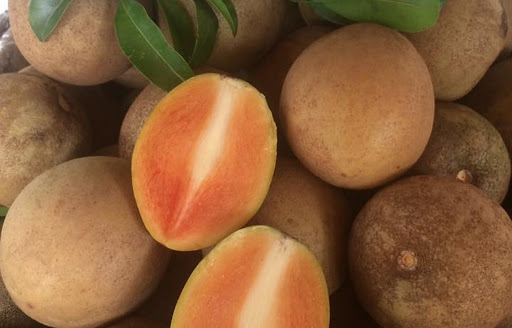
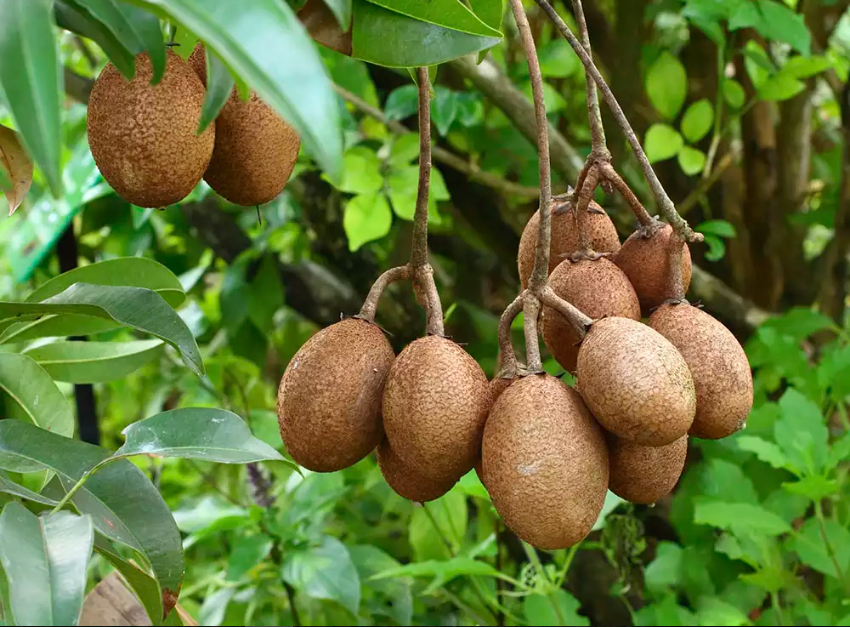
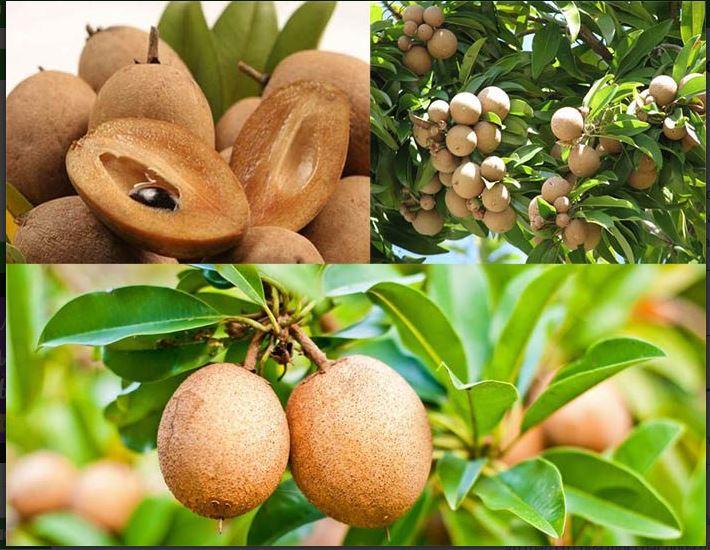
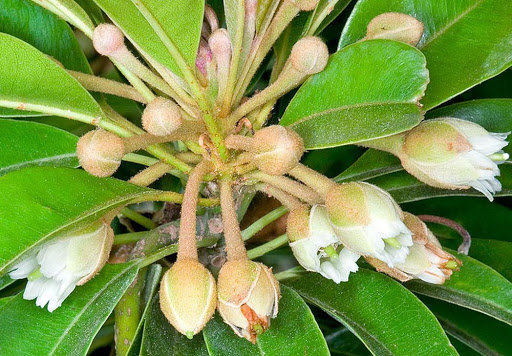
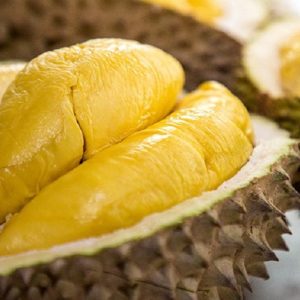
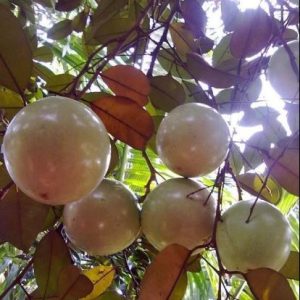
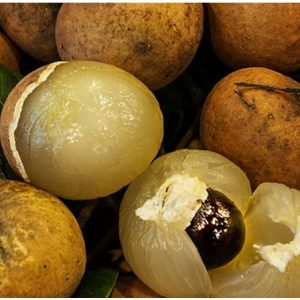











Đánh giá
Chưa có đánh giá nào.